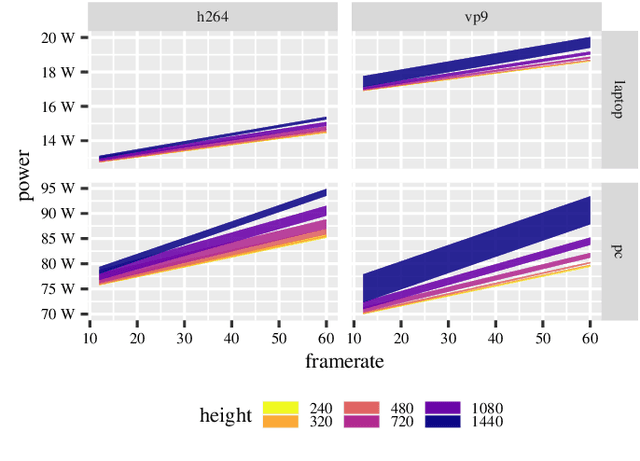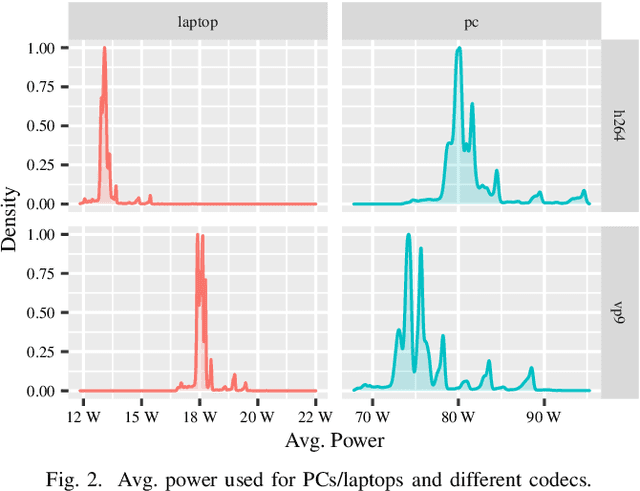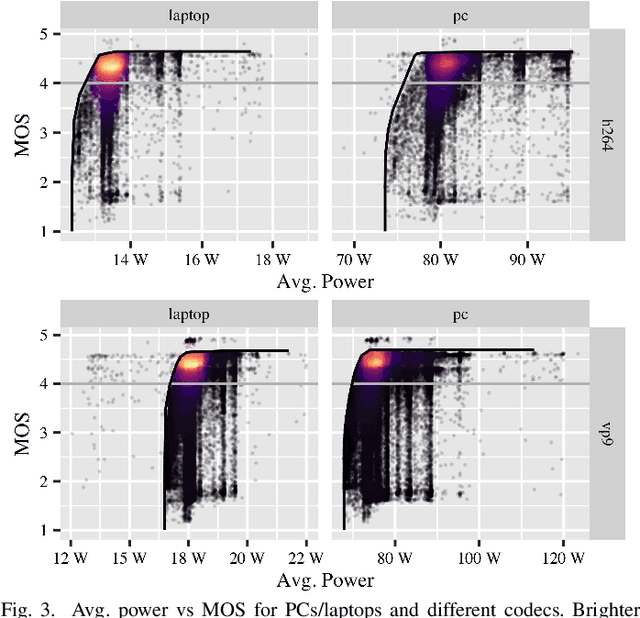Werner Robitza
Satellite Streaming Video QoE Prediction: A Real-World Subjective Database and Network-Level Prediction Models
Oct 17, 2024



Abstract:Demand for streaming services, including satellite, continues to exhibit unprecedented growth. Internet Service Providers find themselves at the crossroads of technological advancements and rising customer expectations. To stay relevant and competitive, these ISPs must ensure their networks deliver optimal video streaming quality, a key determinant of user satisfaction. Towards this end, it is important to have accurate Quality of Experience prediction models in place. However, achieving robust performance by these models requires extensive data sets labeled by subjective opinion scores on videos impaired by diverse playback disruptions. To bridge this data gap, we introduce the LIVE-Viasat Real-World Satellite QoE Database. This database consists of 179 videos recorded from real-world streaming services affected by various authentic distortion patterns. We also conducted a comprehensive subjective study involving 54 participants, who contributed both continuous-time opinion scores and endpoint (retrospective) QoE scores. Our analysis sheds light on various determinants influencing subjective QoE, such as stall events, spatial resolutions, bitrate, and certain network parameters. We demonstrate the usefulness of this unique new resource by evaluating the efficacy of prevalent QoE-prediction models on it. We also created a new model that maps the network parameters to predicted human perception scores, which can be used by ISPs to optimize the video streaming quality of their networks. Our proposed model, which we call SatQA, is able to accurately predict QoE using only network parameters, without any access to pixel data or video-specific metadata, estimated by Spearman's Rank Order Correlation Coefficient (SROCC), Pearson Linear Correlation Coefficient (PLCC), and Root Mean Squared Error (RMSE), indicating high accuracy and reliability.
Power Reduction Opportunities on End-User Devices in Quality-Steady Video Streaming
May 24, 2023Abstract:This paper uses a crowdsourced dataset of online video streaming sessions to investigate opportunities to reduce the power consumption while considering QoE. For this, we base our work on prior studies which model both the end-user's QoE and the end-user device's power consumption with the help of high-level video features such as the bitrate, the frame rate, and the resolution. On top of existing research, which focused on reducing the power consumption at the same QoE optimizing video parameters, we investigate potential power savings by other means such as using a different playback device, a different codec, or a predefined maximum quality level. We find that based on the power consumption of the streaming sessions from the crowdsourcing dataset, devices could save more than 55% of power if all participants adhere to low-power settings.
Modeling of Energy Consumption and Streaming Video QoE using a Crowdsourcing Dataset
Oct 11, 2022



Abstract:In the past decade, we have witnessed an enormous growth in the demand for online video services. Recent studies estimate that nowadays, more than 1% of the global greenhouse gas emissions can be attributed to the production and use of devices performing online video tasks. As such, research on the true power consumption of devices and their energy efficiency during video streaming is highly important for a sustainable use of this technology. At the same time, over-the-top providers strive to offer high-quality streaming experiences to satisfy user expectations. Here, energy consumption and QoE partly depend on the same system parameters. Hence, a joint view is needed for their evaluation. In this paper, we perform a first analysis of both end-user power efficiency and Quality of Experience of a video streaming service. We take a crowdsourced dataset comprising 447,000 streaming events from YouTube and estimate both the power consumption and perceived quality. The power consumption is modeled based on previous work which we extended towards predicting the power usage of different devices and codecs. The user-perceived QoE is estimated using a standardized model. Our results indicate that an intelligent choice of streaming parameters can optimize both the QoE and the power efficiency of the end user device. Further, the paper discusses limitations of the approach and identifies directions for future research.
* 6 pages, 3 figures
 Add to Chrome
Add to Chrome Add to Firefox
Add to Firefox Add to Edge
Add to Edge